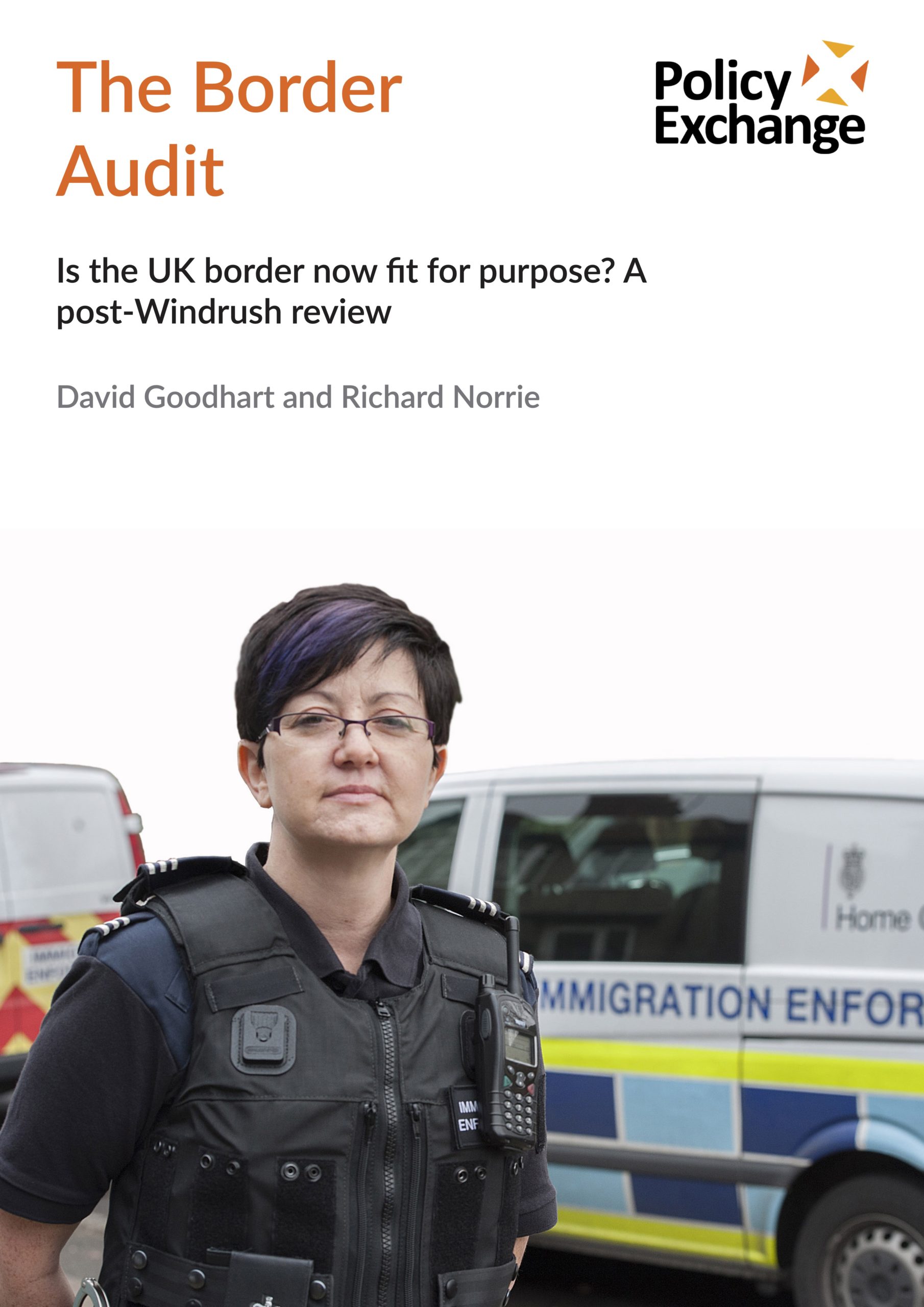
July 30, 2018
The Border Audit
Despite the Windrush scandal the UK’s border is now far more “fit for purpose” than it was 10 years ago and the numbers being added each year to the illegal population could be as low as 15,000. But as national borders are being transformed by new technologies and new thinking about how to manage flows of goods and people as quickly and safely as possible, the UK border needs continuing innovation and reform.
The report’s main recommendations include:
- A UK version of ESTA for visitors. After Brexit, all non-UK arrivals who do not need a visa should be required to fill in a “visa lite” Electronic Travel Authorisation (like the US ESTA system) to allow for increased use of e-Gates (a UK border success story) and swifter movement across the border for low-risk groups.
- Roll out ID system for EU citizens. A unique digital reference for interactions with the state is being developed for the 3.6m EU citizens settled here after Brexit. This experiment with a unique number system should be a trial run for an initially voluntary system for UK citizens.
- More decisive removals. Too many failed asylum seekers remain in the country permanently, joining the estimated stock of 500,000 illegal immigrants. The Home Office should train more UKVI legal asylum caseworkers and move more decisively to remove people before they lodge a judicial review. This should go alongside reforms to allow application for asylum from outside the UK and a Canadian-style system for private sponsorship of applications.
- Regularisation of long-term illegals. A generalised amnesty is not desirable but those who have been here illegally for more than 10 years should be allowed to regularise their status.
- A single command combining responsibility for the sea borders. The UK needs to do more to join up the 14 different departments and authorities with an interest in the coastline. We should appoint a single post with the authority, when necessary, to direct all departmental coastal assets, to be located in Portsmouth.
- Bring rail and ferry operators closer into line with airlines in the information they provide about passengers: The Advanced Passenger Information system for airlines has been one of the success stories of the past decade—and is the basis of the restored exit checks—but rail and ferry operators lag behind. More collaboration on security matters with Irish authorities is also required to prevent the Common Travel Area being a backdoor into the UK.
- Lower fees for citizenship applications. Visa fees are an important source of income (about £2bn a year) but their level needs to be more closely aligned to public policy, not just revenue needs. The high charges for citizenship applications (over £1,500 for an individual and nearly £5,000 for a family with two children) should be substantially reduced and people should not have to pay fees to prove a status they already possess.
- More investment in paying illegals to leave. Currently about 80,000 failed asylum seekers report every month to the authorities. Greater efforts should be made to encourage them to leave including paying them more to do so and establishing a joint scheme with DFID to help returnees establish small businesses in their countries of origin.
- Higher investment overall. The Government should abandon the aim of breaking even in the border function and aim to increase spending on the border gradually (currently just 0.3 per cent of public spending), investing part of this uplift in more detection systems for lorries at Calais and Dover, more detention places for migration offenders, more legally trained asylum officers, more border patrol vessels for the coastline and more facial recognition technology at the border.


